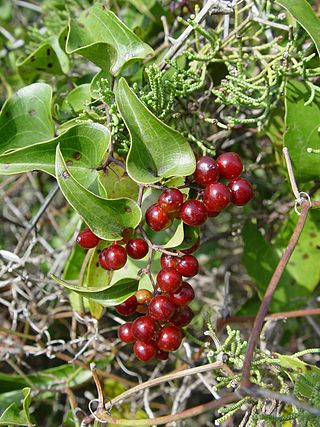
Smilax is a genus of about 300–350 species, found in the tropics and subtropics worldwide. They are climbing flowering plants, many of which are woody and/or thorny, in the monocotyledon family Smilacaceae, native throughout the tropical and subtropical regions of the world. Common names include catbriers, greenbriers, prickly-ivys and smilaxes. Sarsaparilla is a name used specifically for the Neotropical S. ornata as well as a catch-all term in particular for American species. Occasionally, the non-woody species such as the smooth herbaceous greenbrier are separated as genus Nemexia; they are commonly known by the rather ambiguous name carrion flowers.

Zinnia is a genus of plants of the tribe Heliantheae within the family Asteraceae. They are native to scrub and dry grassland in an area stretching from the Southwestern United States to South America, with a centre of diversity in Mexico. Members of the genus are notable for their solitary long-stemmed 12 petal flowers that come in a variety of bright colors. The genus name honors the German scientist Johann Gottfried Zinn (1727–1759).

Cynodon is a genus of plants in the grass family. It is native to warm temperate to tropical regions of the Old World, as well as being cultivated and naturalized in the New World and on many oceanic islands.
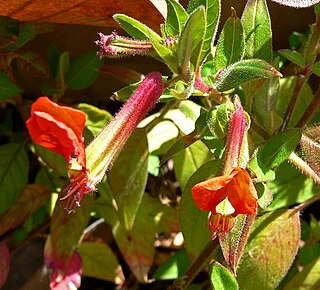
Cuphea is a genus containing about 260 species of annual and perennial flowering plants native to warm temperate to tropical regions of the Americas. The species range from low-growing herbaceous plants to semi-woody shrubs up to 2 m tall. Commonly they are known as cupheas, or, in the case of some species, as cigar plants. The generic name is derived from the Greek word κυφος (kyphos), meaning "bent," "curved," or "humped."

Bulbinella is a genus of plants in the family Asphodelaceae, subfamily Asphodeloideae, first described as a genus in 1843. Many species are endemic to Cape Province in western South Africa, confined to the winter rainfall area. Other species are endemic to New Zealand, where they are most common in the central Otago region which enjoys a similar climate to the Cape Region of South Africa.
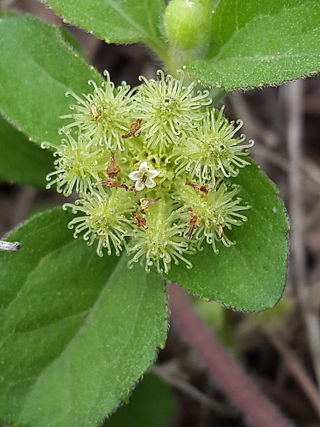
Acanthospermum australe is a South American species of herbaceous plants first described as a species in 1758.

Eulalia is a genus of Asian, African, and Australian plants in the grass family.
Pseudechinolaena is a genus of tropical and subtropical plants in the grass family, all but one species endemic to Madagascar.

Coelorachis is a genus of plants in the grass family, widespread across much of Asia, Africa, Australia and the Americas.

Ctenium is a genus of African and American plants in the grass family.
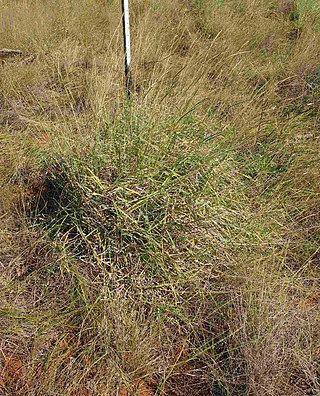
Mnesithea, or jointtail grass, is a genus of Asian, Australian, and Pacific Island plants in the grass family. The number of species placed in the genus varied considerably as of November 2024 depending in large part on how the genus Coelorachis was treated. Sources that synonymized Coelorachis with Mnesithea accepted about 26 species. Those that synonymized Coelorachis with Rottboellia accepted about seven.

Lupinus elegans is a species of flowering plant in the legume family known by the common names such as elegant lupine and Mexican lupine. It is native to Mexico and Guatemala.
Melica persica is a species of grass that can be found in Central Asia, India, and in Gansu, Jilin, Sichuan provinces of China.

Philibertia is a genus of flowering plants in the family Apocynaceae, first described as a genus in 1819. It is native to South America.
Trichoneura is a genus of plants in the grass family. It has a scattered distribution in Africa, Arabia, and the Americas.
Elionurus elegans is a species of plants in the family Poaceae. It is found in Nigeria, Senegal and Burkina Faso. It is used as a fodder plant. Its essential oils from the aerial parts contain the terpenic compounds campherenone (43.0%), caryophyllene oxide (4.9%) and bisabolone (4.9%) whereas root essential oils contain campherenone (39.0%), epi-beta-santalene (12.0%) and caryophyllene oxide (4.6%).
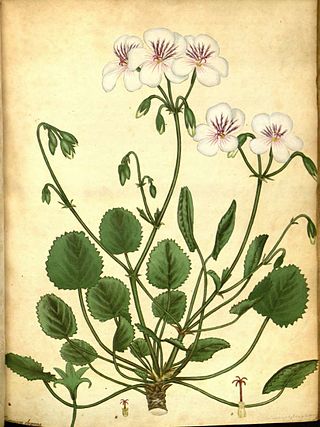
Pelargonium elegans is a species of flowering plants in the family Geraniaceae.
Mirabilis elegans is a species of flowering plants. It is found in Chile and Peru.
Stelis roseopunctata is a species of flowering plant in the family Orchidaceae, native to Colombia, Ecuador and Venezuela. It was first described by John Lindley in 1846 as Pleurothallis roseopunctata and transferred to Stelis by Rodrigo Bernal in 2015. Stelis elegans(Kunth) Pridgeon & M.W.Chase is a synonym of Stelis roseopunctata; Stelis elegansLuer & R.Vásquez is a separate species.












